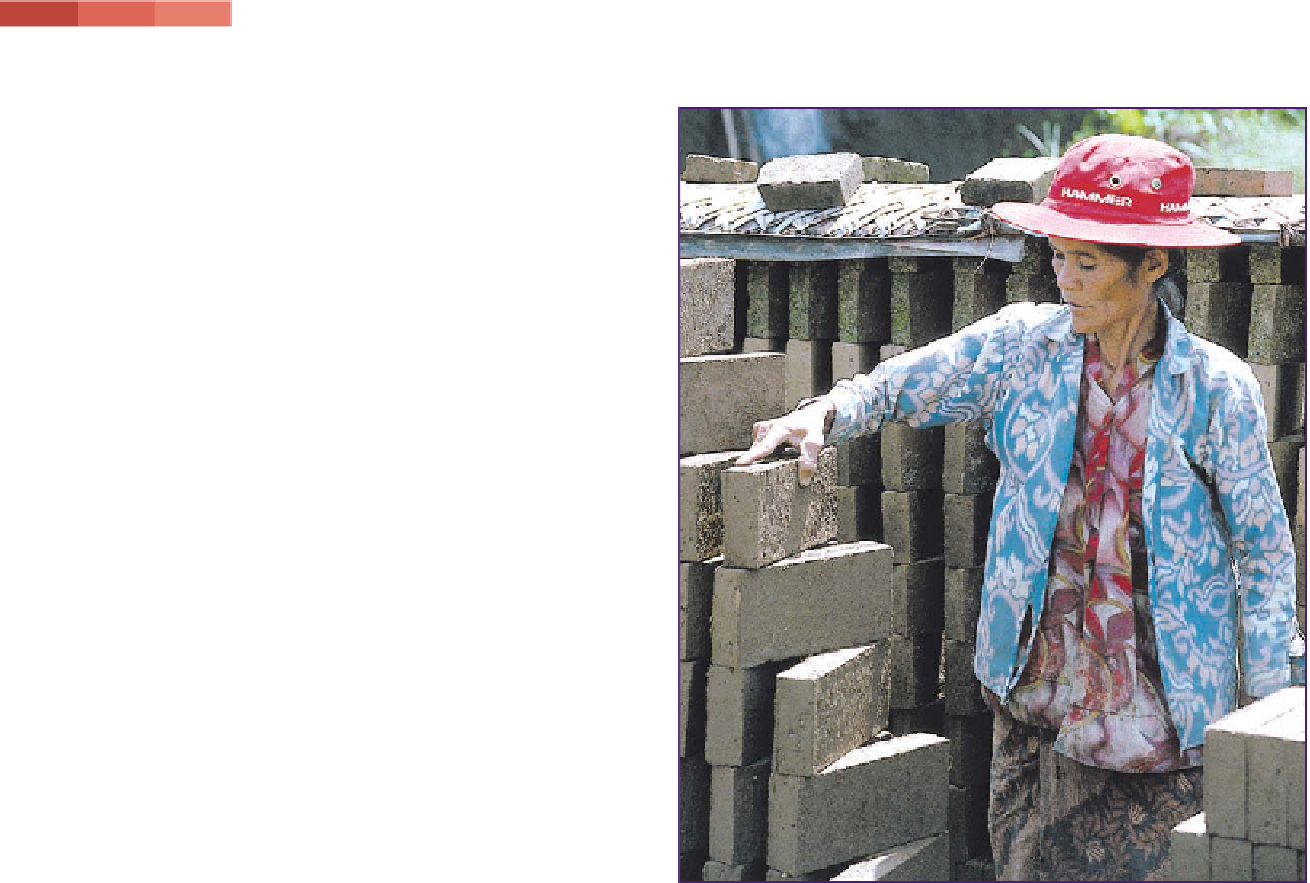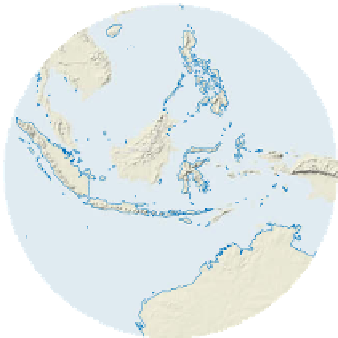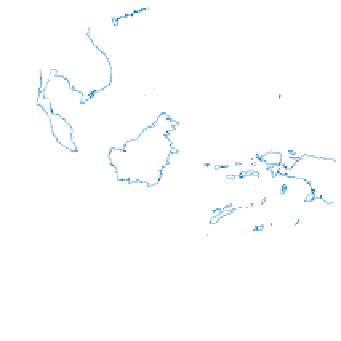Geography Reference
In-Depth Information
5
CHAPTER
Identity: Race, Ethnicity,
Gender, and Sexuality
Field Note
Building Walls
Traveling on the Indonesian island of
Bali, I saw a brick-making facility
and stopped to visit. Boys and
women were building bricks
by hand, in the hot sun. I
watched young boys scoop
wet mud from a quarry by a
creek into their wheelbar-
rows. They poured the mud
into wooden forms. Once the
bricks began to dry and harden
in the sun, someone had to turn
the bricks repeatedly to prevent
them from cracking.
The woman in Figure 5.1 worked ten hours a day, six
days a week, turning, stacking, and restacking bricks to pre-
vent them from cracking. For her work, she earned about
45 cents (U.S.) per hour.
More than a century ago, bricks were made this way
in the United States. Today, the brick-making industry in
the United States makes use of a great deal of technol-
ogy and robotics to manufacture bricks. Instead of using
the sun to bake the bricks, brick-making factories in the
United States employ enormous tunnel-shaped kilns.
The
Mississippi Business Journal
described how bricks
are made in one factory: “Clay and water go in one end
of the new 590 foot tunnel kiln and brick pallets will roll
out the other end as robots and employees work side
by side.”
What hit me harder than the difference in tech-
nology between the two countries is the difference in
labor. In Bali, women and boys make bricks. In the United
States, the vast majority of brick-makers are men, aided
by machines. One company estimated that 98 percent of
its operations' employees in the factory are men. What
South
China
Sea
PHILIPPINES
10
°
N
Philippine
Sea
MALAYSIA
0
°
INDONESIA
Bedugul
Bali
10
°
S
INDIAN
OCEAN
100
°
E
20
°
S
130
°
E
110
°
E
120
°
E
Figure 5.1
Bedugul, Indonesia.
This woman working at a brick-making
facility in the village of Bedugul on the Indonesian island of Bali
makes about 45 cents (U.S.) per hour and works 10 hours a day,
6 days a week.
© H. J. de Blij.
144




































































